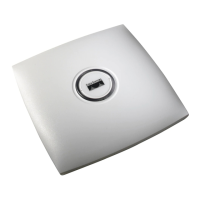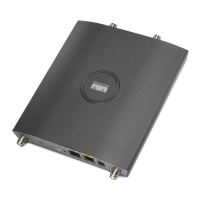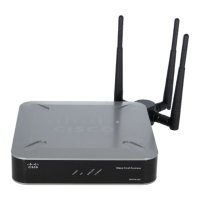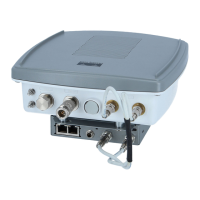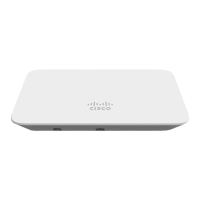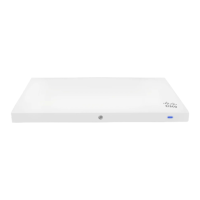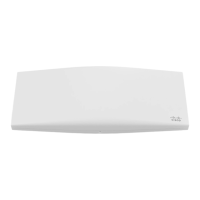Spectrum Expert Connect Mode (optional) (SE Connect)—An SE Connect AP is configured as a dedicated
spectrum sensor that allows connection of the Cisco Spectrum Expert application running on a local host to
use the CleanAir AP as a remote spectrum sensor for the local application. This mode allows viewing of the
raw spectrum data such as FFT plots and detailed measurements. This mode is intended for only remote
troubleshooting.
SE Connect mode is not available in AP1552, 3500 and 3600 in bridge (mesh) mode.Note
Pseudo MAC (PMAC) and Merging
PMAC and Merging phenomenon is similar to the one for 3500 access points in local mode. A PMAC is
calculated as part of the device classification and included in the interference device record (IDR). Each AP
generates the PMAC independently. While it is not identical for each report (at a minimum the measured
RSSI of the device is likely different at each AP), it is similar. The function of comparing and evaluating
PMACs is called merging. The PMAC is not exposed to customer interfaces. Only the results of merging are
available in the form of a cluster ID.
The same device can be detected by multiple APs. All the PMACs and IDRs are analyzed on the controller
and a report is generated called a device cluster, which shows the APs detecting the device and the device
cluster showing the AP which is hearing the device as strongest.
In this merging spatial proximity, RF proximity (RF neighbor relationship) work together. If there are six
similar IDRs with 5 APs nearby and another one from an AP that is far away, it is unlikely that it is the same
interferer. Therefore, a cluster is formed taking all these into account. MSE and the controller first rely on RF
Neighbor lists to establish spatial proximity in a merge.
PMAC Convergence and Merging depends upon the following factors:
• Density of the sensors
• Quality of the observed classification
• RSSI from the interferer to the APs
• RF neighbor list at the APs
So RRM on 2.4 GHz in mesh also plays a key role in deciding the merging aspect. APs should be RF neighbors
for any possibility of Merging. RF Neighbor list is consulted and spatial relationships for IDRs are taken into
account for Merging.
Because there is no Monitor Mode in mesh, a single controller merging occurs on the controller. The result
of a controller merge is forwarded to the MSE (if present) along with all of the supporting IDRs.
Cisco Mesh Access Points, Design and Deployment Guide, Release 7.3
OL-27593-01 91
Site Preparation and Planning
CleanAir
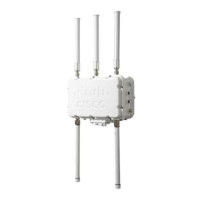
